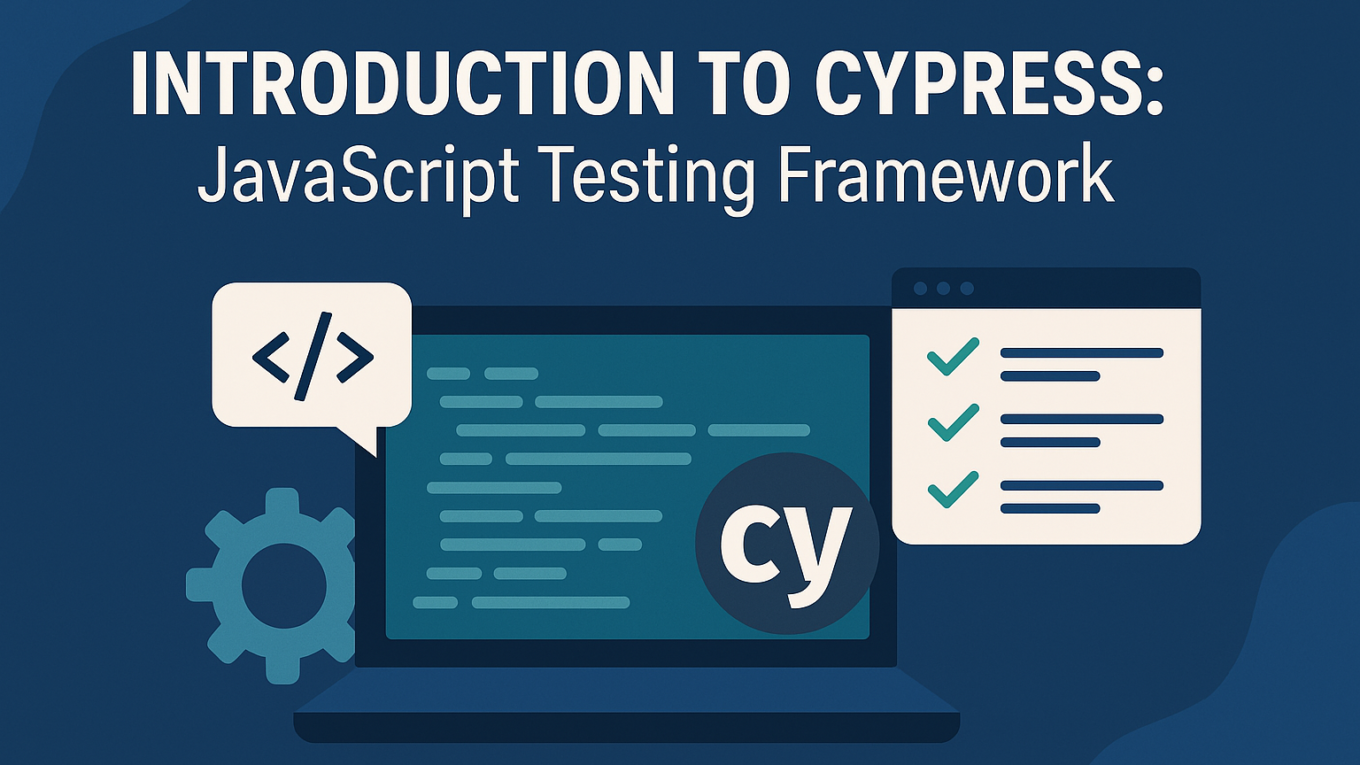Introduction to Cypress: JavaScript Testing Framework
Do you struggle with testing your web applications effectively? Cypress might be the solution you need! This powerful tool helps developers create reliable tests for modern websites. In this guide, we’ll explore what makes Cypress special and why so many developers love it.

What is Cypress?
Cypress is an open-source testing tool built with JavaScript specifically for modern web applications. Unlike other testing tools, Cypress runs directly inside your browser. As a result, it can access every part of your application – from DOM elements to network requests.
Developers created Cypress to solve common problems they faced with older tools like Selenium. Moreover, Cypress operates in the same run loop as your application, which gives it unique abilities to modify web traffic and respond to events instantly.
Key Features of Cypress
Here’s what makes Cypress stand out from other testing tools:
- Automatic Reloads: Your tests refresh immediately when you change your code.
- Time Travel: Cypress takes snapshots during test runs, so you can see exactly what happened at each step.
- Easy Debugging: When tests fail, you get clear error messages. Additionally, you can use browser DevTools while testing.
- Smart Waiting: Cypress automatically waits for elements to appear, so you don’t need extra wait commands.
- Network Control: You can easily mock server responses and test edge cases.
- Visual Evidence: Cypress captures screenshots of failures and records videos of headless test runs.
- Multiple Browsers: Run tests in Chrome, Firefox, Edge, and Electron.
Advantages of Cypress
1. Developer-Friendly Experience
Developers love Cypress because it’s easy to set up and use. First, you write simple test commands. Then, you see results instantly in the interactive test runner. This immediate feedback makes writing and fixing tests much faster than with traditional tools.
2. More Reliable Tests
Flaky tests that sometimes pass and sometimes fail frustrate many testers. Fortunately, Cypress reduces this problem by automatically waiting for elements, animations, and page loads. As a consequence, your tests become more consistent and trustworthy.
3. Excellent Documentation
Cypress offers clear, detailed guides with practical examples. In addition to basic instructions, you’ll find best practices, common patterns, and integration guides for popular frameworks and CI systems.
4. Strong Community Support
A growing community actively improves Cypress and creates helpful plugins. Furthermore, many developers share tips and solutions through forums and social media, so you can easily find help when needed.
5. Fast Test Execution
When you use Cypress Cloud or integrate with CI providers, you can run tests in parallel across multiple machines. Therefore, even large test suites can complete quickly, saving valuable time.
Limitations to Consider
Despite its many benefits, Cypress does have some limitations:
- Single Origin by Default: Cypress tests normally run within one domain. However, you can configure workarounds for testing across multiple domains.
- Browser Support: Cypress supports fewer browsers than some other testing frameworks, though this is improving over time.
- Testing Types: While Cypress excels at end-to-end and integration testing, other tools like Jest work better for unit tests.
Is Cypress Right for Your Project?
Cypress works especially well for:
- Single-page applications using modern JavaScript frameworks
- Projects needing thorough end-to-end testing
- Teams using test-driven development
- Applications where user workflows are critical
If these points match your project, then Cypress likely offers major advantages over traditional testing approaches.
Getting Started
Ready to try Cypress? In our next article, we’ll show you how to install it and set up your first project. You’ll be surprised how quickly you can write your first test!
Conclusion
To sum up, Cypress represents a modern approach to testing that fits well with today’s web development. Its unique design, user-friendly features, and growing ecosystem make it perfect for teams wanting reliable, maintainable tests.
As websites become more complex, tools like Cypress help ensure quality and reliability. By understanding what Cypress offers, you can make smart choices about your testing strategy.
Stay tuned for our next article where we’ll help you install Cypress and start your first project!

